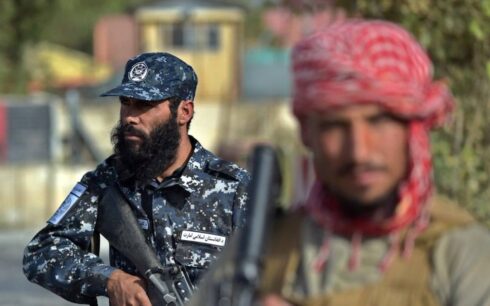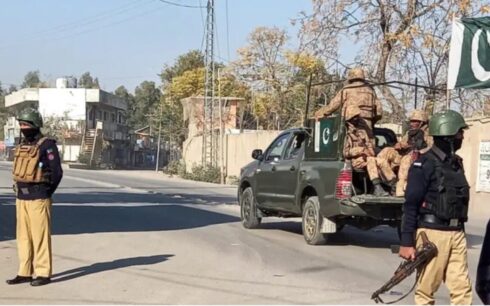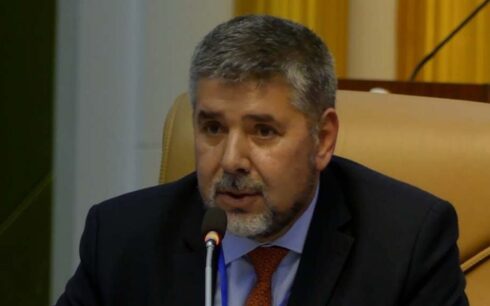Scenario three: Formation of an inclusive government with international support
The third scenario envisions the establishment of an inclusive government in Afghanistan, facilitated by the international community. Proponents of this scenario highlight several key factors:
1. The Doha agreement’s unfulfilled promises: The Doha Agreement, signed between the United States and the Taliban, contained two crucial components: the withdrawal of U.S. troops from Afghanistan and the formation of an inclusive government in the country. While the U.S. successfully withdrew its forces, the Taliban have since resisted efforts to establish an inclusive government. This failure has led to significant criticism of the U.S., both internationally and domestically. Within the United States, the Republican Party has repeatedly criticized President Joe Biden for what they perceive as a poorly planned withdrawal.
Political analysts have also voiced strong criticism of the withdrawal, arguing that it has emboldened extremist groups globally while weakening democratic and human rights advocates in the West. As a result, the U.S. government has, albeit somewhat inconsistently, continued to push for the establishment of an inclusive government in Afghanistan.
2. United Nations support: In 2023, the United Nations Security Council passed a resolution calling for the formation of an inclusive government in Afghanistan. The resolution mandates that the UN work toward this goal. When major global powers unite on an issue, the chances of its success increase significantly, making it difficult to dismiss this scenario.
3. International and regional consensus: There is a relative consensus among various international and regional powers regarding the need for an inclusive government in Afghanistan. While there are disagreements between Western nations and regional countries on the specifics, there is broad agreement on the principle of inclusivity.
4. Support from Afghan political figures: Prominent Afghan political figures, including former President Hamid Karzai and Dr. Abdullah Abdullah, have expressed support for this solution. The Supreme Council of National Resistance of Afghanistan, which includes figures like Abdul Rab Rasul Sayyaf, Atta Mohammad Noor, Abdul Rashid Dostum, and Mohammad Mohaqiq, has also advocated for peaceful change. Mohammad Hanif Atmar, the former leader of the “Rights and Justice Party,” opposes armed resistance against the “Islamic Emirate of Afghanistan” and insists on political change through international mediation.
5. Potential Taliban cooperation: Based on insights gained during the Doha negotiations, there is a possibility that some Taliban leaders now recognize the complexities of governance and may see the formation of an inclusive government as a viable solution, particularly if it comes with international support for Afghanistan’s political and economic stability.
6. Armed groups open to negotiation: The National Resistance Front of Afghanistan and the Afghanistan Freedom Front, both of which currently possess military capabilities, have taken up arms out of necessity. However, if their fundamental objectives can be achieved through peaceful means, they are likely to prefer negotiation and peace over continued conflict.
These points suggest that this scenario has significant support on global, regional, and domestic levels. Additionally, the ongoing conflicts in Ukraine and the Middle East may encourage countries like Russia and Iran to support this scenario, provided the resulting government is not seen as a puppet of the U.S. or Western powers. However, there are two major critiques of this scenario: first, the differing interpretations of what constitutes an “inclusive government” between the U.S. and its allies and the regional powers may be difficult to reconcile. Second, the Taliban fighters may not fully grasp the responsibilities of governance and may continue their current practices until they face significant armed resistance.
Scenario four: Partition of Afghanistan
Those who advocate for the partition of Afghanistan base their argument on three main points:
1. Pashtun dominance: Advocates of partition argue that the perceived dominance and exclusionary policies of the Pashtuns have been a source of continuous hardship and instability in Afghanistan. They believe that this long-standing imbalance has made the country’s current situation untenable.
2. Lack of a shared national identity: The absence of a unified national identity, which has historically hindered unity in Afghanistan, has been exacerbated by recent conflicts. In many countries, a lack of shared national identity has led to separation and partition. This sentiment is increasingly being expressed by Afghan intellectuals.
3. International endorsement of partition: During his tenure as U.S. Vice President, Joe Biden once suggested that Afghanistan was incapable of unity and should be divided into several parts. For those who see the West as the epicenter of global decision-making, Biden’s comment has been used to bolster their argument for partition, presenting themselves as forward-thinking and civilized by advocating for this drastic measure.
Recently, following the resurgence of the Tehrik-i-Taliban Pakistan (TTP), a Pakistani journalist writing for Mashriq Bydar argued that Afghanistan had become a regional center of instability and that the solution was to divide it into several parts. The journalist suggested that the Pashtuns of Afghanistan, numbering 13 million, should join the 45 million Pashtuns in Pakistan, that Persian-speaking Afghans should be annexed by Iran, and that those speaking Turkic languages should align with Uzbekistan. This analysis has been interpreted as a threat to the Taliban, suggesting that if any country were to be partitioned, it would be Afghanistan rather than Pakistan. For Afghan partition advocates, this has become another piece of evidence supporting their case.
However, critics of this scenario highlight several significant obstacles:
1. Regional opposition: Most regional countries are strongly opposed to the partition of Afghanistan, fearing that it would encourage separatist movements within their own borders. Pakistan and Iran are particularly against this idea, though Russia has shown some past interest in partition. During the Soviet Union’s withdrawal from Afghanistan, Moscow proposed dividing the country into northern and southern regions, a plan rejected by Ahmad Shah Massoud in 1988. The idea resurfaced during talks in Dushanbe in 2001, but was again dismissed by Afghan military leader Fahim Khan.
2. Ethnic interconnectedness: Afghanistan’s various ethnic groups are deeply interconnected, having lived together for generations. Separating them would be no simple task, and social ties often counter the arguments made by those advocating for partition.
3. Lack of consensus among non-Pashtun intellectuals: Among non-Pashtun intellectuals and educated individuals, there is no consensus on partition. Many recognize that breaking away from the Pashtuns alone would not bring peace and stability, recalling the infighting among Tajiks, Hazaras, and Uzbeks during the 1990s. Such conflicts could intensify if Afghanistan were divided, rendering the idea of partition meaningless.
4. Multiple divisions and regional claims: Critics also argue that if Afghanistan were to be partitioned, it would not split into just two parts but rather into multiple regions, each claimed by neighboring countries. This could lead to significant political, cultural, and economic challenges, which Afghan leaders are well aware of, and thus they generally oppose the idea of partition.
5. Historical precedents: In the 21st century, partitions have typically occurred through force, not through media declarations or press conferences. The two active military forces in Afghanistan, the National Resistance Front and the Afghanistan Freedom Front, are both opposed to partition. Given this, it is unlikely that the desires of a small group of intellectuals could bring about such a change.
Conclusion
In summary, while none of these scenarios can be entirely dismissed, the current geopolitical environment suggests that the partition of Afghanistan is unlikely.
Among the four scenarios, the author believes that the formation of an inclusive government with the mediation of the international community is the most viable. The military pressure exerted by the National Resistance Front on the Taliban could support this scenario rather than oppose it. Concerns about differences between the U.S. and regional powers could be mitigated by agreeing on a neutral and non-aligned Afghanistan. Such an outcome would not only restore America’s damaged reputation but also provide comfort to regional countries by establishing a neutral government.
This article is the third and last segment of a three-part opinion series written by Abdul Hafeez Mansoor, a former member of Afghanistan’s Parliament and a member of the Afghan Republic negotiating team during the 2019 peace talks with the Taliban in Doha.
The views and opinions expressed in this article are those of the author and do not necessarily reflect the official policy or position of Amu TV.





